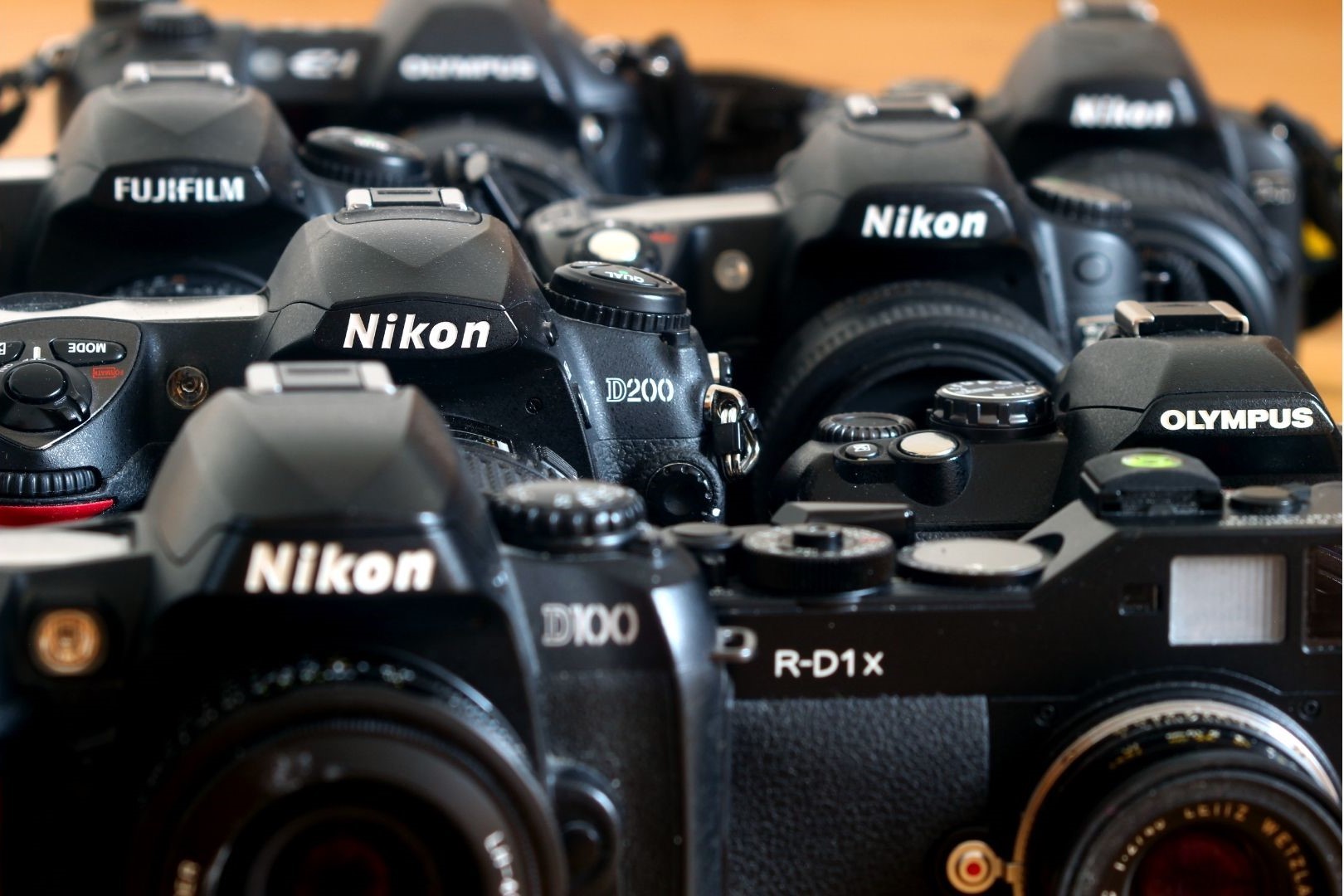The debate of rangefinder vs DSLR is a debate of antique and old vs latest and new. Photography is a long-standing art form. Since its introduction, cameras have come in a variety of types and shapes, but the rangefinder and DSLR are still the most popular as well as discussed.
Rangefinders, in general, are excellent for street photography since they are quiet, compact, and sharp. If you’re a beginner, however, you’ll face a steeper learning curve. DSLR cameras, on the other hand, are considerably more versatile and simple to learn, but typically larger and louder.
So, which do you think you’d pick? In actuality, you’d find die-hards in both groups if you counted them up. Let’s dive in to finally reach a decision.
What is Rangefinder and DSLR Camera?
What is a Rangefinder camera?
These cameras are known as “rangefinder” cameras because they use dual-image rangefinding technology to focus. As two superimposed images line up when you turn a ring, you’re in perfect focus.
Rangefinder cameras were the most popular compact cameras in the 1950s. They were the first type of 35mm camera to be created.
You never see through the lens of a rangefinder camera. Like a disposable camera, you focus and compose through a window on the top right.
The rangefinder is visible through the small glass on the left. As you turn the focus ring, it triangulates, bringing two pictures into perfect focus.
Most rangefinder cameras have a central rectangular window just above and to the right of the lens that catches the light to brighten the frame lines. This is an indication of a decent camera; the cheapest rangefinder cameras don’t have a third pane and instead have squiggly frame lines.
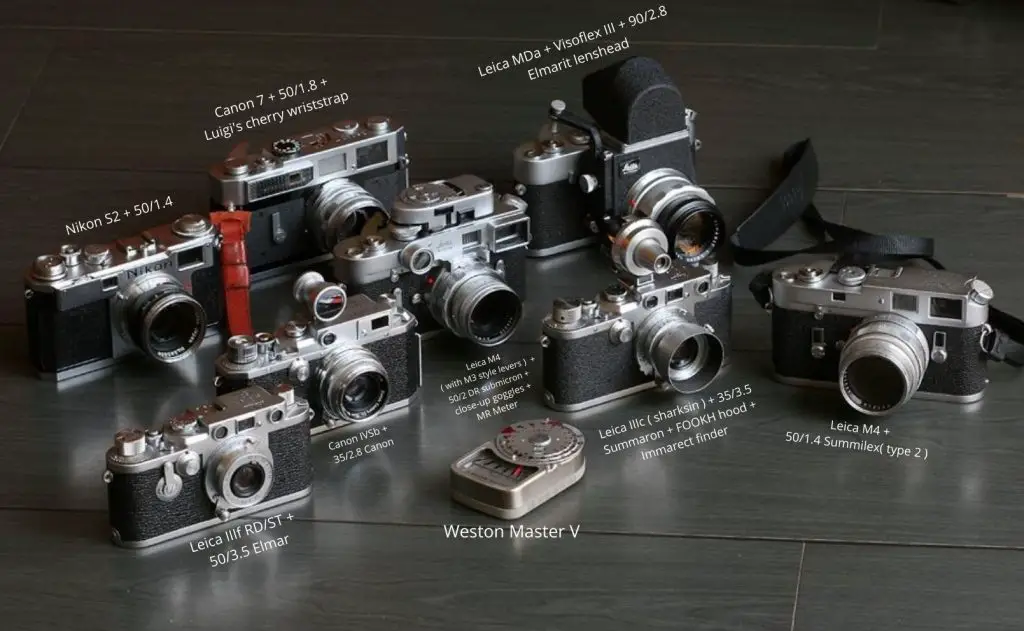
What is a DSLR camera?
A Digital SLR camera is referred to as a DSLR. The acronym SLR stands for single-lens reflex which means that light is reflected from the lens onto a flat ground-glass screen via a reflex mirror.
Read Also: DSLR vs Mirrorless cameras
With the introduction of the DSLR camera, a new era of digital photography began. The first DSLR camera was released in 1999, and single-lens reflex cameras were finally phased out after only a few years of technological advancements. The DSLR offers a wide range of possibilities for taking professional camera-quality images, with a large range of solutions on the market.
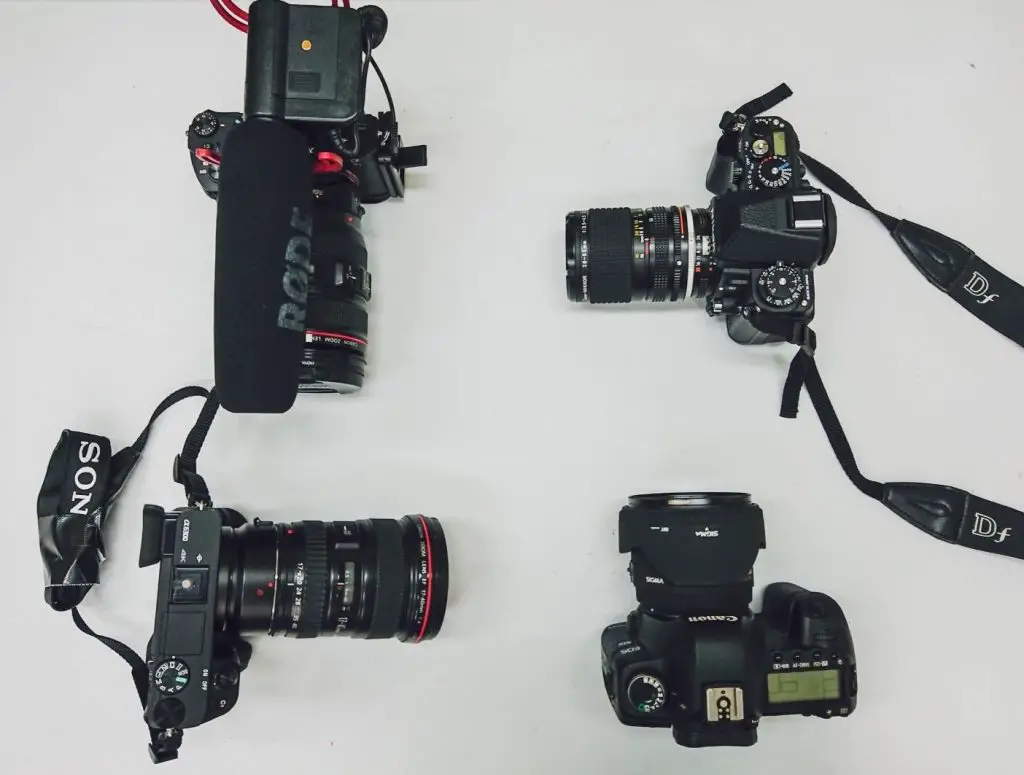
Similarities and Differences
Similarities between Rangefinder and DSLR cameras
Here are a few similarities between rangefinder and DSLR cameras:
- Usage of 35mm film
- Usage of B&W or color-negative film
- Usage of SD cards
- Changing of lenses
- Include viewfinders
A 35mm film can be used in both rangefinder and SLR film cameras. For both cameras, you can use either black and white or color negative film. SD cards can be used to store digital photos in both digital rangefinders and digital SLRs. Though some rangefinder cameras have fixed lenses, most digital and film-based rangefinder and SLR cameras allow you to change the lens. Both types of cameras include viewfinders to compose and focus your image, but only some of them are optical, whilst digital cameras have screens to examine or replay your images and modify settings.
Thus it’s not only about rangefinder vs DSLR, There are a few similarities as well.
Differences between Rangefinder and DSLR cameras
These are a few differences between rangefinder and DSLR cameras:
- Lens Options
- Viewfinder Blockage
- Focusing
- Field of View
- Size and weight
- Viewfinder blackouts
- Viewfinder Location
Lens options
Fixed lenses (lenses without multiple focal lengths) function well with rangefinder cameras. There are a few zoom lenses that have been modified for rangefinder cameras, but they are very few. With lenses on rangefinder cameras, viewfinder parallax is also an issue.
It wasn’t until the advent of digital rangefinders that this issue was mostly resolved. Zoom and fixed lenses work nicely with SLR and DSLR cameras. Because the flange distance on rangefinder cameras is substantially lower than on SLR (or DSLR) cameras, wide-angle lenses can be much smaller.
Viewfinder blockage
You risk blocking your viewfinder if you choose to use a larger lens on your film rangefinder. Because the image is coming through the lens. Unlike rangefinder cameras, an SLR or DSLR camera will not block any windows needed to see an image in the viewfinder. This is not an issue with digital rangefinders.
Focusing
When focusing up close on a rangefinder, viewfinder parallax might occur. As a result, film-based rangefinders aren’t ideal for photographing close-ups. This is not a problem with SLR and DSLR cameras since what you see in the viewfinder is what the film (or sensor) sees when you hit the shutter.
Field of View
In comparison to DSLR cameras, rangefinder cameras feature a larger field of view in the viewfinder, allowing you to see beyond the lens’s normal frame lines. This allows the photographer to anticipate a good image as it occurs by allowing them to notice action before it enters the frame.
Size and weight
DSLR (or SLR) cameras are often larger and heavier than rangefinder cameras due to the batteries and mirrors. This makes rangefinders more discrete (combined with the shutter’s quietness), which is why they’re ideal for documentary and street photography.
Viewfinder blackouts
Unlike a DSLR, the viewfinder of a rangefinder does not need to be blacked out. The mirror used to see the image moves out of the path of the light striking the film or sensor behind it, which causes a DSLR or SLR camera to blackout when taking an image. When using a rangefinder, you’ll be able to keep your eyes on your subject the entire time.
Viewfinder location
A rangefinder’s viewfinder is located on the top and rear of the camera or might be on the right or left side. The viewfinder of SLR (or DSLR) cameras is located in the middle of the camera, not on the rear or top.
This segment of differences has vital importance in deciding rangefinder vs DSLR, as the major key differences are discussed in it. These detailed yet concisely discuss differences can help you reach a final decision.
Advantages and disadvantages
It is quite necessary to discuss the pros and cons of rangefinder cameras in this comparison. You can make sure if these cameras can meet your needs or not.
Advantages of Rangefinder cameras
Here are a few pros/advantages of rangefinder cameras:
- Superior image quality
- Compact size and lightweight
- Smaller and lighter lenses
- Quieter
- Excellent wide-angle lenses
- Compose and shoot with both eyes open
- No shutter lag
- Passive focusing in dark
- Better focus system
- Greater field of view
- Best for travel photography
Superior image quality
The image quality of rangefinder cameras is superior. It is made possible by the camera’s design that dispenses the flipping mirror, which is the fundamental essence of a single-reflex camera. These lens designers create wide-angle rangefinder lenses with rear elements that can get very close to the image plane allowing them to be considerably smaller, sharper, and have less distortion than SLR lenses.
There is less vibration to blur hand-held photos because there is no flipping mirror. Unless a mirror lock-up is utilized, the flipping mirrors of SLRs blur images taken from tripods at speeds of roughly 1/30 – 1/8.
For wide and standard lenses, rangefinder cameras have far more precise focusing.
Compact size and lightweight
Prisms, focus screens, and rotating reflex mirrors contribute considerably to the weight of a camera. As a rangefinder does not feature any of it, thus these cameras are lighter in weight and smaller in size.
Smaller and lighter lenses
Normal and wide rangefinder lenses are generally tiny because they are not developed to clear a flipping mirror.
Quieter
There are no mirrors that are flipped up and down for each shot. All you hear with a rangefinder is the silent click of the shutter.
Excellent wide-angle lenses
For rangefinder cameras, wide, ultra-wide, and ultra-ultra-wide lenses are readily available.
On full-frame, getting lenses as wide as 12mm with minimal to no distortion is a piece of cake.
Even the cheapest wide rangefinder lenses, such as the Voigtländers, are usually superb, whereas the best wide zoom SLR lenses, such as Canon’s new 16-35mm f/2.8 L II and Nikon’s 17-35mm f/2.8 AF-S, are merely mediocre.
No shutter lag
When using a rangefinder, simply press the button and it will go. You’ve captured the pinnacle of the moment. While on a DSLR, before the shutter can open, the mirror has to move out of the way.
Your decisive moment has passed by the time the DSLR mirror has moved out of the way.
Passive focusing in dark
A rangefinder camera can focus instantly and without the use of any irritating AF assist lights as long as there is enough light to view. Simply switch the focus until the two images combine, and presto! you have perfect focus.
Better focus system
The rangefinder camera’s focusing method is what makes it so enjoyable to shoot with. Unlike DSLR cameras, which have a reflex mirror, rangefinder cameras include a beam splitter and a pentaprism that are parallel to each other. The rangefinder’s internal architecture causes two images of the subject to appear in the viewfinder. The focus wheel must then be rotated until the two images are overlapped; this is the stage where the focus is established.
This is one of the important points in the rangefinder vs DSLR comparison that can drag your attention.
Greater field of view
For wide-angle photography, rangefinder cameras are a suitable alternative. Because there is no flipping mirror, the rear element of the lens projects deep into the camera body, allowing the viewfinder to encompass a wider field of vision than the lens in use. This allows lens designers to create ultra-wide, wide-angle, and ultra-ultra-wide lenses for rangefinder cameras.
Even before DSLR, extremely wide-angle lenses, the Voigtländer 12mm lens was the widest-angle rectilinear lens in general manufacture, with a 121-degree angle of view.
Best for travel photography
The aspects of being lighter in weight, compact in size, lighter lenses, greater field of view, and better focusing combined make the rangefinder cameras a comparatively better choice than the DSLR.
Disadvantages of Rangefinder cameras
These are the cons/disadvantages of rangefinder cameras:
- Unaware of the results
- Viewfinder blockage
- Need constant service
- Poor focus with telephoto lenses
- Focuses only in the center
- No macro or close focus
- Faulty frame lines
- Harder usage of filters
Unaware of the results
This isn’t a big deal for ordinary photographs at normal distances, but rangefinders offer you no idea what you’re getting when using long lenses or macro.
Even with a LEICA rangefinder, you never know what you’re going to get until you see the final result. With a rangefinder, everything is always in perfect focus and you never notice any suggestion of depth of field.
Viewfinder blockage
While the viewfinder on a rangefinder is useful, it has several disadvantages. You’re more likely to cover the lens with your finger or you can forget your lens cap etc. As you are not looking through the lens, your picture may be disrupted due to these conditions and thus, you get the results you were unaware of.
If your lens is too large, it may appear in the corner of your viewfinder, preventing you from seeing the entire image.
When using an ultrawide lens with an external finder, the lens will frequently block some of the images in the finder! To get around this, some lenses incorporate cut-outs.
The smart rangefinder photographer avoids large lenses in favor of smaller lenses that do not obstruct his viewfinder.
Need constant service
The rangefinder mechanism is a highly complex mechanical device. Thus, these cameras require regular maintenance.
In this fast and busy world, it is quite hard to find time for camera maintenance. This is a serious negative point for the rangefinder in this debate of rangefinder vs DSLR.
Poor focus with telephoto lenses
Regardless of lens choice, rangefinder cameras use the same hardware to determine distance. This is a big benefit for wide lenses, but a major disadvantage for long lenses.
However, the majority of photographers never detect this as a focus issue and instead blame their lenses, although many cameras and lens combinations just require adjustment at a repair shop to make things right.
Focuses only on the center
Rangefinder cameras can only focus on a single point in the image’s center.
Because they can’t focus somewhere else in the frame, you must first focus, then compose. You’re back to square one if the subject moves.
To compensate blindly, experienced rangefinder shooters learn how much to shift the focus lever to counteract this.
No macro or close focus
Cameras with rangefinder lenses rarely focus closer than two or three feet away (0.6 – 1m).
Even at this distance, the viewfinder is far enough away from the lens to ensure that you won’t obtain the picture you want.
Yes, you can buy all kinds of wacky macro accessories for rangefinder cameras, but even if they allow you to focus close up, you’re still not seeing through the lens.
Faulty frame lines
Because the frame lines in the viewfinder are not always accurate, you never know what you’ll receive.
Because most rangefinders have only a few frame lines, there’s a danger that the lens and camera will be out of alignment (like using a 40mm lens on a Leica M when its closest frame lines to that are either 35mm or 50mm, so again not 100 percent accurate)
Harder usage of filters
It is difficult to use filters on these cameras. Filters like graduated ND filters and polarized filters are quite harder to use.
So, why have DSLRs mostly superseded rangefinders during the last few decades? Why would anyone want to carry a larger, louder camera that takes fuzzier pictures and couldn’t focus in the dark and that no one can figure out?
There are two formats of DSLR cameras i.e. DX and FX.
These are important questions that pop up in mind while discussing rangefinder vs DSLR. This detailed segment will clear all the doubts and questions.
Advantages of DSLR camera
These are the pros/advantages of a DSLR camera:
- Better sensitivity to light
- Shutter and focus speed
- Flexible controls
- Versatility
- You can see what you shoot
- Possibility of using multiple lenses
- Full control over depth of field
- Focus anywhere in the frame
- Solid construction
Better sensitivity to light
Because there is less noise, you can operate in low-light situations and take photos that you wouldn’t be able to take with a rangefinder
Shutter and focus speed
DSLR cameras are capable of acquiring focus quickly and taking several images per second. Professional DSLR cameras may shoot at speeds of up to 10 frames per second. Digital SLR cameras are used for all professional action and sports photography.
Flexible controls
Unlike rangefinder cameras, DSLRs are not necessarily designed for “simplicity.” Rather, a DSLR usually has a lot more buttons and controls than a Rangefinder camera. You’ll be able to swiftly modify settings according to your needs once you’ve figured out how to use those controls.
Versatility
A DSLR camera is not restricted to only portrait or street photography. Rather there is a wide range of DSLR cameras that can shoot from macro to wide-angle by just changing the lens. There are multiple options available for the lenses.
You can see what you shoot
A DSLR is built with reflex mirrors, which means that instead of seeing through a see-through hole in the camera, you look through the lens.
DSLRs see the exact composition, framing, point-of-view, perspective, and, in most cases, depth-of-field.
What you see is what you get, no matter how long or short your lens is or how far away the subject is.
Possibility of using multiple lenses
Depending on your demands, a wide range of lenses can be fitted and utilized on DSLRs. This is the leading edge of DSLR when it comes to rangefinder vs DSLR.
Read Also: DX lenses vs FX lenses
So, a DSLR can have the macro, fisheye, prime, ultra-wide angle, and telephoto at any time of your need. There are two formats of the lenses i.e. DX and FX.
Full control over depth of field
You have complete control over isolating the foreground from the background and bringing everything into focus using the lens’ aperture setting.
Some portrait and telephoto lenses may effectively isolate your subjects while also producing a smooth and appealing background blur known as “bokeh.”
Focus anywhere in the frame
DSLRs have ground-glass or matte focus fields that run the length of the frame. Thus, this makes you unable to manually focus anywhere in the frame by simply staring at it while moving the focus ring.
Solid construction
DSLR cameras are made to last. While some sections of professional DSLRs are made of strong plastic, they are built of magnesium alloy and can withstand a lot of physical punishment. Whereas, rangefinder cameras are comparatively less likely to resist extreme weather conditions due to low build quality than DSLRs.
Disadvantages of DSLR
These are the disadvantages/cons of a DSLR camera
- Complexity
- Weight and size
- Noise
- Batteries in excess
- Inferior optics
Complexity
Working with DSLR cameras is pretty difficult. Once you’ve purchased a DSLR, you’ll need to devote a significant amount of time to learning how to use it and figuring out what all of the buttons do.
The process of understanding the DSLR functionality can easily frustrate some people. With a DSLR, you’ll need to practice patience.
Weight and size
These babies are hefty and large! It takes some time to adjust the weight and size of the camera.
Carrying the camera around might cause severe pain in the neck. To alleviate the agony, special straps are available that can be purchased.
Weight makes it difficult to keep the camera still, so you’ll have to learn how to hold it properly to have minimal blur in your photos.
This is a considerable argument to make for rangefinder vs DSLR.
Noise
Every time the shutter opens and shuts, there is a significant quantity of noise that comes out of the camera due to the nature of DSLRs and their structure.
Newer cameras, such as the Nikon D600, now offer a unique “Quiet” option that helps reduce noise.
Batteries in excess
A single battery can operate a rangefinder for years, although it usually just powers the meter, not the camera.
Without batteries and charges, modern DSLRs are frequently worthless.
Inferior optics
DSLR optics are built for ease of use and autofocus.
DSLR telephoto and telephoto zoom lenses can be superb, but to avoid hitting their reflex mirrors, DSLR wide-angle lenses must be constructed as retrofocus lenses. This results in broad lenses that are softer and more distorted, especially in the corners.
Top Rangefinder and DSLR Cameras
3 top digital rangefinder cameras
These are the 3 top digital rangefinder cameras:
- Olympus Pen F
- Leica M Digital Rangefinder Camera
- Fujifilm X100F Digital Camera
3 top film rangefinder cameras
These are 3 top film rangefinder cameras:
- The Contax G2
- Nikon S3
- Canon Canonet QL 17 GIII
3 top DSLR cameras
These are the 3 best DSLR cameras:
- Nikon D850
- Nikon D750
- Canon 5D Mark IV
Photo Samples
Rangefinder camera photo samples
These are the image samples by rangefinder cameras.
Portrait, landscape, and street/architectural photography are the most prominently performed by a rangefinder camera. These photos are from different models of different rangefinder camera brands.
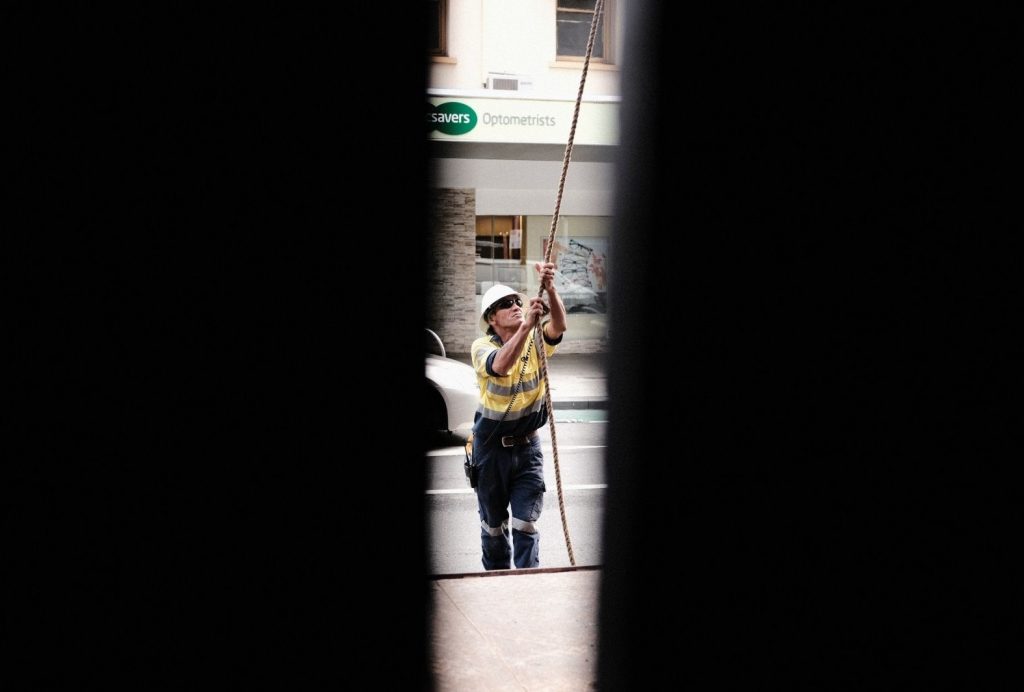

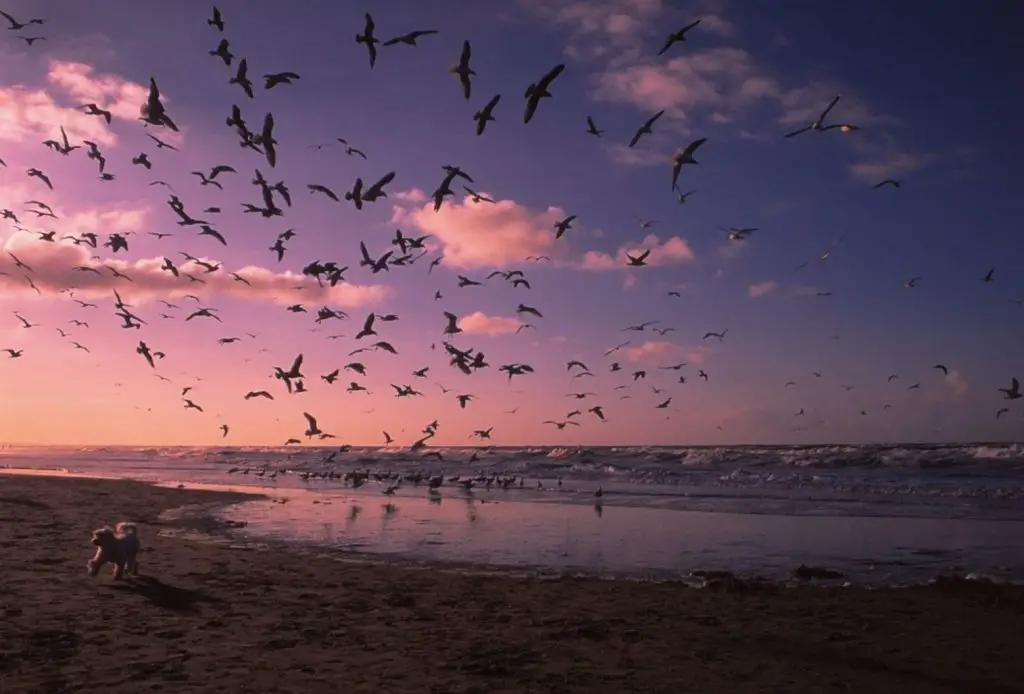
DSLR camera photo samples
The added photos are to show the versatility of a DSLR camera. A clear photo of a fast-moving car, a Portrait with smooth bokeh, and ultrawide angle photos can be captured by a DSLR.
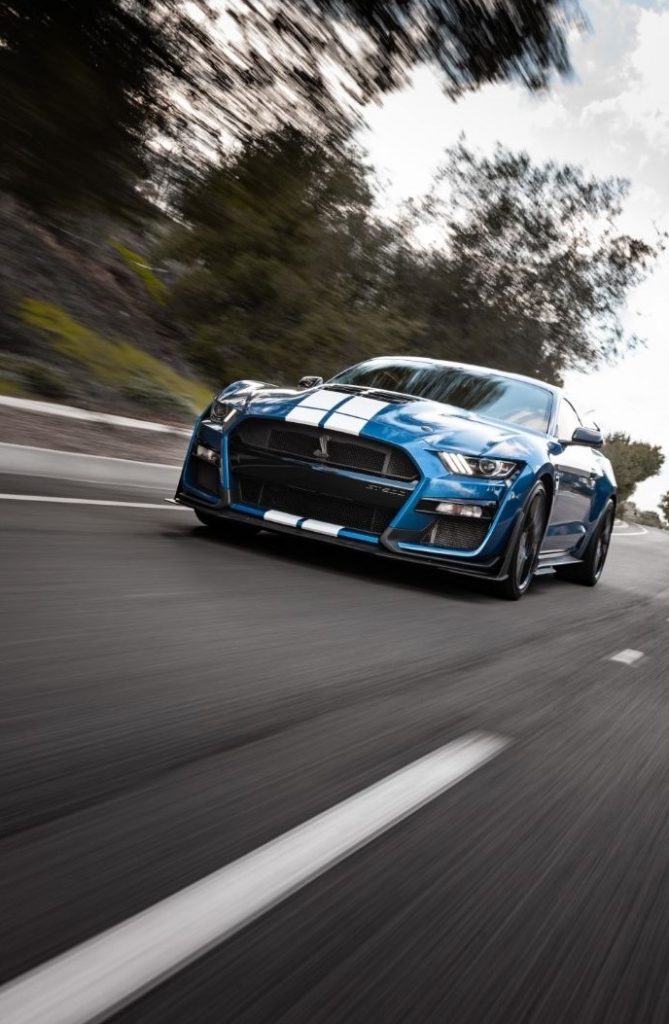


Conclusion
DSLR cameras suit best if you want to use the camera for multiple purposes. You can shoot macro and the next minute you can shoot ultra-wide. But if you like classic and do not prefer to carry a heavy camera around your neck, go for a rangefinder.
Additionally, there are other factors to consider as well. Rangefinder makes less noise meanwhile DSLR makes considerable noise. Rangefinder does not provide a feature to see before action, meantime DSLR makes it possible. DSLR needs batteries in excess but the rangefinder has longer battery timings.
FAQs
What is the difference between a rangefinder and a DSLR?
The primary difference is that a rangefinder utilizes some sort of gadget to measure the distance (or range) to the subject and then adjust the focus to that distance, whereas an SLR sets the focus directly via the lens (either with phase-detect autofocus or a manual focusing screen).
Are SLR better than rangefinder?
YES. Rangefinders, in general, are excellent for street photography since they are quiet, compact, and sharp. If you’re a beginner, however, you’ll face a steeper learning curve. SLR cameras, on the other hand, are typically larger and louder, but they are far more versatile and simple to learn.
How do rangefinders work?
To estimate the distance to an object, the Laser Rangefinder employs a laser beam targeted at it. A laser, similar to a pin, beamed to the target and reflected back to the rangefinder. The distance is calculated using the time it took the laser to reflect back to the device.
Why is a rangefinder less accurate than an SLR?
Because you can see what the lens will record, framing with an SLR is easier and more accurate than with a rangefinder. Rangefinder frame lines are an approximation of your final frame, not an exact cut. This forces you to reconsider how you frame your photographs.
How accurate is a rangefinder camera?
A correctly calibrated rangefinder will focus as well as SLRs up to roughly 75mm, and substantially better below 50mm, within the domain of the eye’s accuracy, and excluding factors like focus shift in particular lenses.
Is Leica Q2 a rangefinder?
The Leica Q2 is a fixed-lens compact camera with a full-frame 47-megapixel sensor, a rangefinder-style electronic viewfinder, a weather-sealed shell, and a price that will make your wallet flee.
Is the Fuji X100V a rangefinder?
The Fujifilm X100V is a rangefinder camera with a fixed F2 lens that is equivalent to 35mm. It contains an optical or electronic viewfinder, as well as a touchscreen LCD that tilts.
How far can a rangefinder shoot?
Most laser rangefinders will detect highly reflective targets out to 1,500 yards with ease. If you’re looking for highway signs, this is ideal. A hunting rangefinder’s true worth is determined by its ability to detect targets the size and reflectivity of deer out to 1,000 yards.
Do rangefinders use lidar?
Laser rangefinders use their optoelectronic systems to emit electromagnetic pulses in laser beams. The laser beam returns to the rangefinder after being reflected from the target’s surface. The rangefinder’s systems then process the beam in order to calculate the distance.
